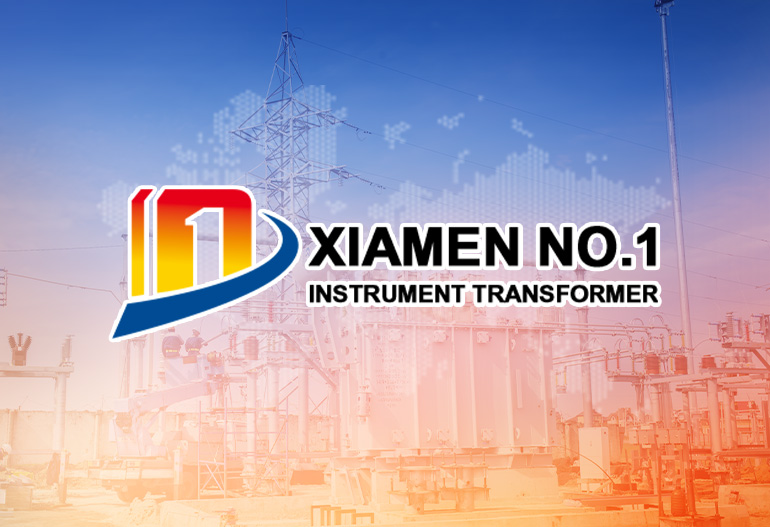Optical Outdoor Voltage Transformers Using Fiber Optic Sensing Technology
Sensing Head: Contains the Pockels-effect material (e.g., a lithium niobate crystal) or a fiber Bragg grating (FBG) integrated with an electro-optic polymer. It is exposed to the high-voltage field and converts voltage variations into optical signals.
Fiber Optic Cable: Transmits light between the sensing head and the signal processing unit. Single-mode fibers are typically used for their low signal loss and high precision.
Light Source: A stable laser diode (e.g., 1550nm wavelength) that emits light into the fiber.
Demodulator: Converts the modulated optical signal back into an electrical voltage reading, often with digital outputs (e.g., Ethernet or Modbus) for integration with monitoring systems.
Outdoor Enclosure: Protects components from environmental factors while allowing the sensing head to interact with the high-voltage conductor.
Temperature Extremes: Fiber optics and electro-optic materials (e.g., lithium niobate) operate reliably from -40°C to +85°C, outperforming traditional VTs that suffer from insulation degradation or oil viscosity changes in extreme heat or cold.
Moisture and Corrosion: Sealed enclosures (IP68-rated) and non-metallic components (e.g., polymer housings, glass fibers) resist water ingress, rust, and salt spray—ideal for coastal villages (e.g., Bangladeshi delta regions) or monsoon-prone areas (e.g., rural India).
Dust and Abrasion: Smooth, sealed surfaces prevent dust accumulation from agricultural activities (e.g., crop threshing in sub-Saharan Africa), while ruggedized fiber cables withstand sand abrasion in arid regions.
No Moving Parts: Unlike traditional VTs with windings or tap changers, fiber optic OVTs have no mechanical components, reducing wear and tear.
No Oil or Coolants: Eliminates the need for periodic oil testing, refilling, or disposal—key in rural areas where maintenance crews are scarce.
Longevity: Fiber optics and electro-optic materials have lifespans exceeding 25 years, outlasting traditional VTs (15–20 years) and aligning with the long-term goals of rural electrification.
Galvanic Isolation: The absence of conductive paths between high-voltage and low-voltage sides eliminates electric shock risks during installation or maintenance—vital in rural areas with untrained operators.
Reduced Fire Hazard: No flammable oil or insulating fluids lower fire risks, protecting communities with limited firefighting resources.
Mechanical Protection: The sensing head (housing the Pockels crystal or FBG) is encased in a shock-absorbent polymer or stainless steel shell to withstand vibrations during transportation (e.g., on unpaved roads) and impacts from wildlife (e.g., birds or rodents).
UV Resistance: Exposed components use UV-stabilized materials (e.g., fluoropolymers) to prevent degradation in sunny regions like rural Australia or the Sahel.
Sealing: Enclosures for demodulators and light sources use dual gaskets and pressure equalization valves to prevent moisture ingress during heavy rains while allowing air circulation to avoid condensation.
Thermal Management: Passive cooling fins or phase-change materials (PCMs) regulate internal temperatures in hot climates, ensuring laser diodes and electronics operate within safe ranges.
Tool-Free Mounting: Pole-mounted OVTs use quick-attach clamps (compatible with standard 6–12 inch utility poles) to reduce installation time—critical for rural crews with limited training.
Plug-and-Play Connections: Fiber optic cables use push-pull connectors (e.g., LC or SC) with dust caps, eliminating the need for specialized splicing tools in the field.
Challenge: Fiber optic OVTs cost 2–3x more upfront than traditional VTs, a barrier for budget-constrained projects.
Mitigations:
Lifecycle Cost Analysis: Highlight lower maintenance and replacement costs (e.g., 70% reduction in 10-year lifecycle costs compared to oil-immersed VTs) to secure funding.
Bulk Purchasing: Partner with regional utilities to negotiate volume discounts (e.g., a 30% price reduction for orders of 100+ units).
Grants and Subsidies: Leverage green energy funds (e.g., Green Climate Fund) that prioritize durable, low-maintenance technologies.
Challenge: Rural technicians may lack familiarity with fiber optics, hindering troubleshooting.
Mitigations:
Simplified Diagnostics: Built-in LEDs indicate faults (e.g., red for fiber break, yellow for low laser power) for easy identification.
Training Programs: Develop regional workshops (in local languages) focused on basic maintenance (e.g., cleaning connectors, replacing fuses) and partnering with local vocational schools.
Remote Support: Enable utilities to access real-time diagnostics via cloud platforms, guiding technicians over the phone.
Challenge: Fiber optic cables are susceptible to breakage from rodent bites or accidental damage during installation.
Mitigations:
Armored Cables: Use steel-reinforced fiber cables rated for direct burial or aerial installation.
Rodent Repellents: Cable jackets infused with capsaicin or bitterants deter gnawing in areas with high rodent activity (e.g., rural Southeast Asia).
Challenge: Optical components may drift over time, requiring periodic calibration—difficult in remote areas.
Mitigations:
Self-Calibrating Algorithms: Embedded software automatically corrects for drift using reference signals, reducing calibration needs to once every 5 years.
Portable Calibration Kits: Deploy regional teams with lightweight kits (e.g., battery-powered signal generators) to perform on-site checks.
UV-stabilized enclosures to withstand 6 hours of daily direct sunlight.
Armored fiber cables buried 1m deep to avoid damage from livestock.
Integration with a community-managed dashboard via LoRaWAN, enabling villagers to adjust agricultural pump usage during low solar output.
316-grade stainless steel enclosures and hydrophobic fiber connectors to resist salt spray.
Vibration-resistant mounting to withstand typhoon-force winds (up to 250km/h).
Low-temperature laser diodes (operational to -40°C).
Insulated enclosures with PCMs to maintain internal temperatures above -20°C.
Wide Dynamic Range: OVTs will measure voltages from 20–120% of nominal to track fluctuations from solar/wind generation, enabling real-time regulation via smart inverters.
Multi-Parameter Sensing: Fiber Bragg gratings will simultaneously measure voltage, temperature, and vibration, providing holistic grid health data.
Anomaly Detection: Edge AI algorithms will analyze optical signal patterns to predict component degradation (e.g., laser aging) and send alerts, reducing unplanned outages.
Mass Production: Scaled manufacturing of lithium niobate crystals and fiber components will lower costs by 50% by 2030, making OVTs competitive with traditional VTs upfront.
Local Manufacturing: Regional production hubs (e.g., in Kenya, Vietnam) will reduce transportation costs and support local economies.
Self-Powered OVTs: Integration of thermoelectric generators (TEGs) or solar cells to power electronics, eliminating reliance on grid power in off-grid microgrids.



